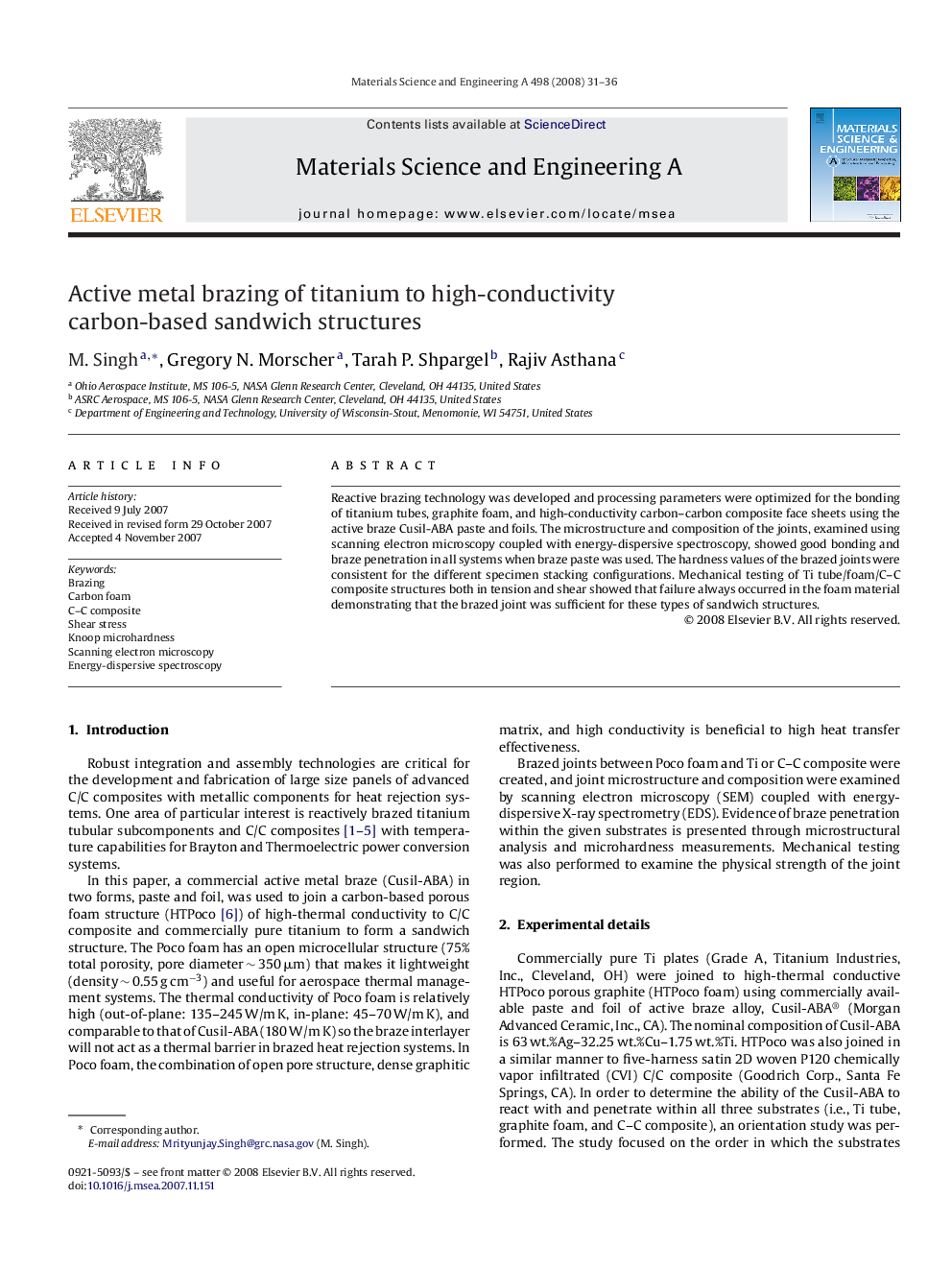| Article ID | Journal | Published Year | Pages | File Type |
|---|---|---|---|---|
| 1581403 | Materials Science and Engineering: A | 2008 | 6 Pages |
Abstract
Reactive brazing technology was developed and processing parameters were optimized for the bonding of titanium tubes, graphite foam, and high-conductivity carbon-carbon composite face sheets using the active braze Cusil-ABA paste and foils. The microstructure and composition of the joints, examined using scanning electron microscopy coupled with energy-dispersive spectroscopy, showed good bonding and braze penetration in all systems when braze paste was used. The hardness values of the brazed joints were consistent for the different specimen stacking configurations. Mechanical testing of Ti tube/foam/C-C composite structures both in tension and shear showed that failure always occurred in the foam material demonstrating that the brazed joint was sufficient for these types of sandwich structures.
Keywords
Related Topics
Physical Sciences and Engineering
Materials Science
Materials Science (General)
Authors
M. Singh, Gregory N. Morscher, Tarah P. Shpargel, Rajiv Asthana,
